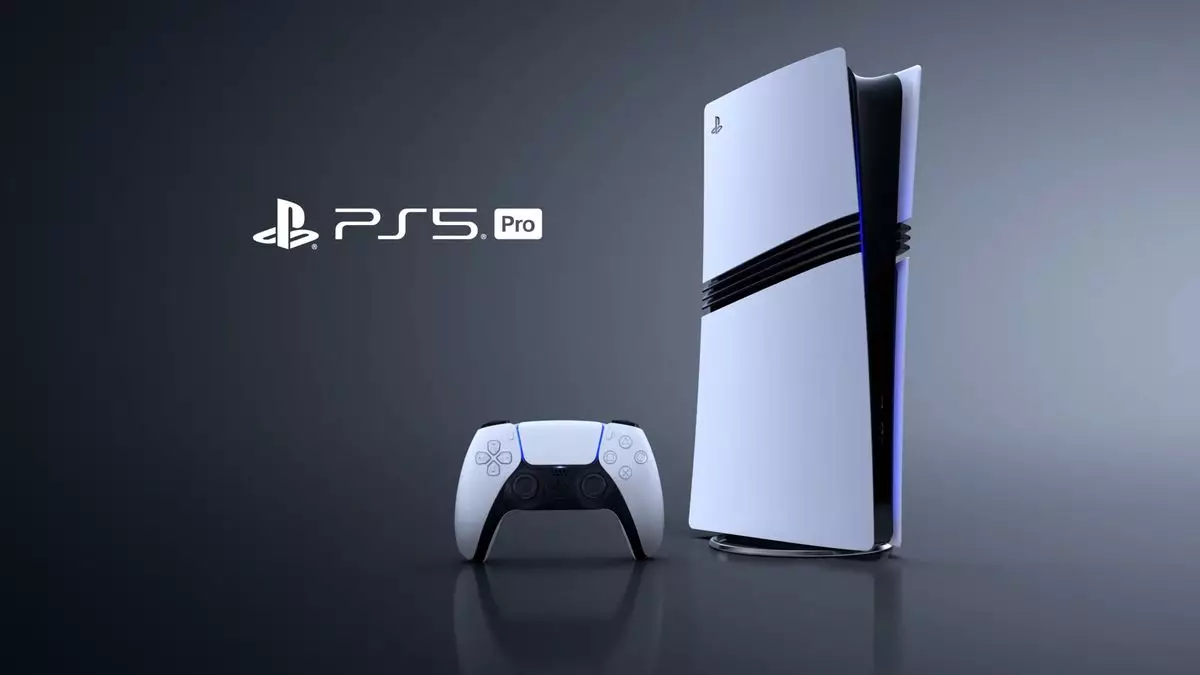As the gaming landscape evolves, the demand for higher-quality visuals intensifies. Sony’s decision to design its own AI upscaling hardware for the PlayStation 5 Pro reveals a significant shift in its strategy. Instead of relying on AMD, the traditional partner for CPU and GPU technology within the PlayStation ecosystem, Sony opted for an independent approach that highlights its commitment to pushing the boundaries of gaming graphics.
At the core of this decision lies a critical understanding of the transformative nature of AI in gaming. Graphics upscaling powered by artificial intelligence is becoming increasingly vital, with leading companies like Nvidia and Intel leveraging dedicated matrix math acceleration in their hardware to enhance visual experience. AMD, notably absent in this crucial area, adheres to hand-coded algorithms for graphics upscaling through FidelityFX Super Resolution (FSR), which limits its performance compared to the competition.
By venturing into building its own dedicated Neural Processing Unit (NPU), Sony aims to not only stand out in the AI graphics landscape but also ensure that it retains control over its proprietary technology. This independence allows for creating specific hardware tailored to the unique demands of the PlayStation 5 Pro, rather than being locked into a licensing agreement for generic solutions.
As articulated by Mark Cerny, lead architect of the PlayStation consoles, this four-year journey was marked by rigorous planning and innovation. Upon initiating the project in 2020, the team faced two pivotal decisions: whether to develop a dedicated NPU or enhance a GPU for machine learning operations. Opting for the latter, Sony engaged in extensive modifications to AMD’s RDNA 2 architecture to create a custom version capable of achieving three hundred trillion operations per second—akin to an Nvidia RTX 4060 Ti.
However, the endeavor wasn’t without its challenges. Matrix math operations are notoriously bandwidth-hungry, posing serious risks of underperformance if existing memory architectures were employed. Sony ingeniously tackled this concern by devising a custom on-chip memory solution that highlighted the usability of vector registers within the RDNA 2 shader cores. This innovation enables efficient matrix calculations to occur on the GPU without needing to access slower system memory.
The culmination of these efforts resulted in the development of PlayStation Spectral Super Resolution (PSSR), Sony’s proprietary upscaling technology designed to rival established platforms such as Nvidia’s DLSS and Intel’s XeSS. This bespoke architecture aims to deliver superior visual fidelity and performance, potentially giving the PS5 Pro a significant edge in the competitive gaming market.
Cerny’s reflections over the last four years also highlight the commitment to enhancing game graphics through artificial intelligence. The insights learned during this venture pave the way for future innovations, as Sony increasingly integrates machine learning into game development. The shift from merely enhancing existing technologies to spearheading proprietary solutions marks a crucial turning point for Sony.
The decision to invest heavily in custom AI solutions underscores a broader strategy for Sony. In an industry where licensing technology could tether a company to limitations and compromises, Sony’s forsaking of AMD’s offerings signifies a belief that machine learning will play a pivotal role in future gaming paradigms. This bold step positions Sony well in the race against competitors who continue to incorporate advanced AI technologies into their hardware designs.
Furthermore, AMD’s ongoing struggle to integrate ML hardware into its RDNA architecture raises questions about its standing in the AI upscaling race. With Intel and Nvidia firmly establishing their dominance in this realm, AMD’s apparent reluctance to embrace the advances of machine learning could inhibit their competitive advantage. Time will tell if Sony’s far-sighted strategy pays off, but at present, it reveals a distinct divergence in how different companies perceive the future of gaming technology.
As the technical details behind the PlayStation 5 Pro unfold, it becomes increasingly clear that the choice to develop in-house AI hardware signals a transformative moment in gaming technology. Beyond merely chasing performance metrics, Sony is making substantial investments in proprietary solutions that could redefine the standards of visual experiences in gaming.
With the rise of machine learning and AI integration, the future indeed looks bright for Sony’s gaming aspirations. The PlayStation 5 Pro is not just an iteration of its predecessors but signifies a thrilling leap into the next era, where graphics, performance, and intelligent enhancements converge to create immersive worlds that appeal to gamers around the globe. As this technology matures, the implications it has for both gameplay and graphics could resonate profoundly throughout the industry, setting new benchmarks and igniting advancements across the board.


Leave a Reply